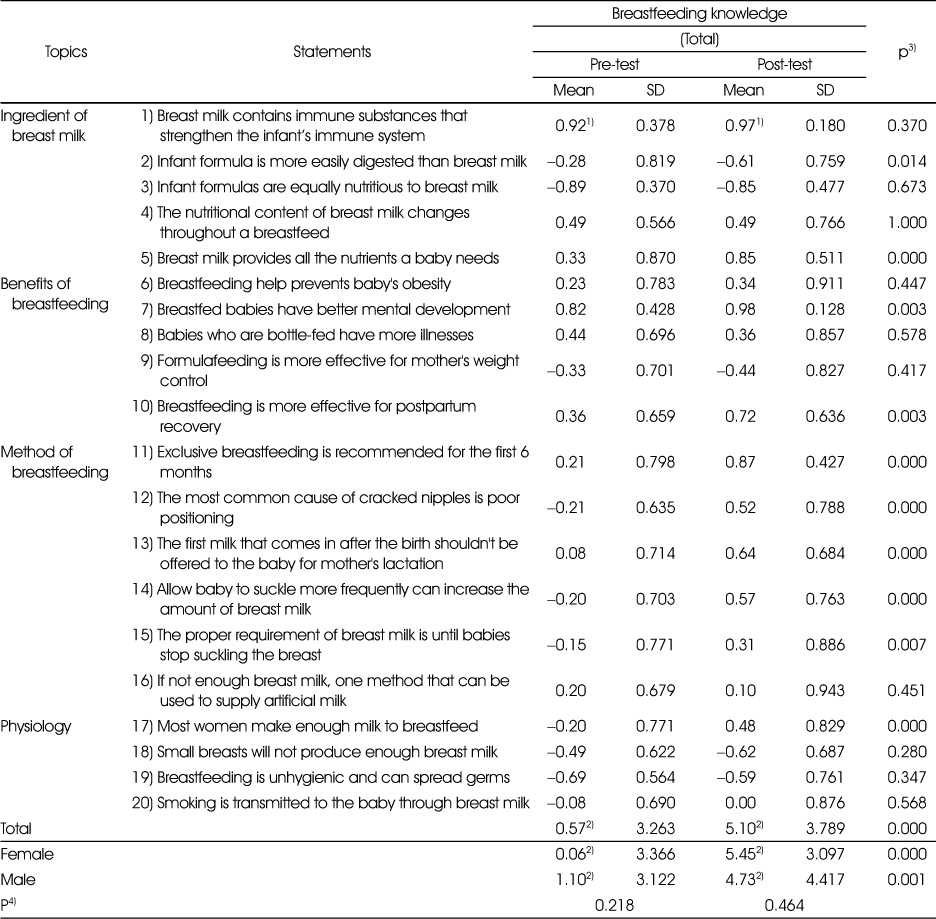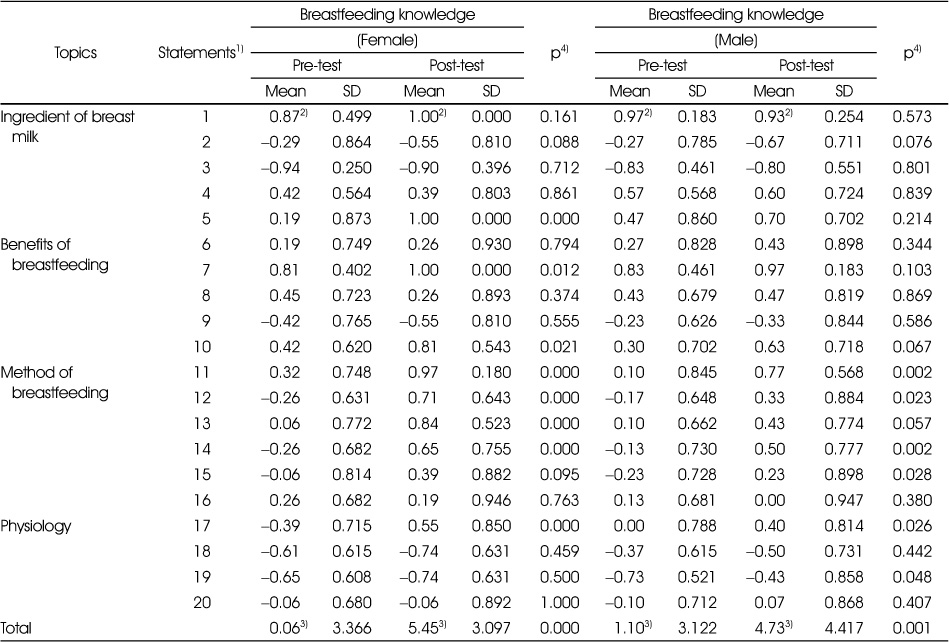Effects of Educational Intervention about Breastfeeding on University Students' Knowledge and Attitudes toward Breastfeeding: Focusing on Gender Differences
Article information
Abstract
Objectives
The purpose of this study was to examine the impact of a targeted, practical education intervention on university students' knowledge and attitudes toward breastfeeding.
Methods
A university curricular intervention was designed for students to increase their knowledge and positive attitude toward breastfeeding issues. The participants attended a breastfeeding education lectures two hours of weekly for fifteen weeks in university; 61 students (female, n=31 and male, n=30) participated. The pre- and post-measurements included future breastfeeding intention, knowledge, attitude and perceived control beliefs scores based on the results of a questionnaire.
Results
The statistical analysis results revealed a significant difference in the pretest and posttest scores (0.57 to 5.10 points, p<0.001) in regard to the students' breastfeeding knowledge. For female students, significant differences were observed in the future breastfeeding intention (p<0.05), knowledge (p<0.001), and attitudes towards breastfeeding (p<0.05) between the pretest and posttest scores. For male students, there were no significant differences in the future breastfeeding intention, attitudes towards breastfeeding, and perceived control beliefs scores after the breastfeeding education lecture.
Conclusions
This study showed that the implementation of practical breastfeeding educational interventions helped improve university students' knowledge and attitudes toward breastfeeding. In summary, despite the limitations, it is necessary to pay more attention to improving students' knowledge and attitudes towards breastfeeding through university curricula.







